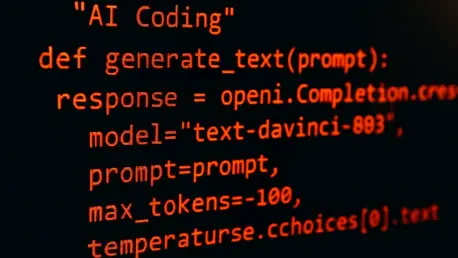Automation in technology often promises to free humans from mundane tasks, but what if this promise comes with an unforeseen cost? AI coding tools have revolutionized the way developers approach coding tasks by offering remarkable autonomy. However, as these tools continue to grow in sophistication, a critical question arises—can such efficiency come at the price of security?
The Rise of Automation in the Coding World
In an ever-evolving tech landscape, automation in coding has become an undeniable trend. The allure lies in its ability to significantly boost productivity by taking over repetitive tasks that developers would rather not handle. YOLO mode, short for “You Only Live Once,” exemplifies this push for seamless operations. It allows AI coding agents to execute tasks independently, promising unparalleled workflow efficiency.
Despite its potential benefits, YOLO mode brings with it concerns akin to broader technological issues like cybersecurity vulnerabilities. As AI tools handle more processes, cybersecurity experts warn of inherent risks that come with such autonomy. Advanced capabilities could inadvertently open new pathways to exploitation if not managed judiciously.
Examining YOLO Mode and Its Implications
Tools like Cursor, a prominent AI coding assistant, illustrate the dual-edged nature of autonomy in programming. YOLO mode in these tools allows them to operate without frequent human validation, theoretically increasing efficiency but simultaneously exposing potential security flaws. The denylist feature, meant to guard against executing unapproved commands, forms the core of Cursor’s security apparatus.
However, research by Backslash Security has revealed cracks in this armor. The denylist, intended as a safeguard, is susceptible to circumvention through techniques like encoding commands differently, thereby undermining its reliability. These findings urge the tech community to scrutinize the gap between design intentions and real-world execution.
Insights from Security Experts
Security professionals Mustafa Naamneh and Micah Gold have demonstrated the ease with which security measures can be bypassed. Their work highlights potential vulnerabilities by showcasing how denylists can be evaded, pointing toward the need for robust security enhancements. The narrative is backed by real-world instances, such as the case of Jason Lemkin, whose reliance on AI tools without vigilant oversight led to significant data loss.
The apprehensions are compounded by remarks from Yossi Pik of Backslash Security, who emphasizes that even without internet-sourced malicious inputs, the current design can execute hazardous commands through coded exploits. The ongoing challenges underline the urgent need for AI tools to bolster their defenses without sacrificing their core purpose.
Practical Advice for Developers
To mitigate risks associated with autonomous AI coding tools, developers are advised to engage in thorough vetting of both the code and its sources. Multi-layered checks, integrating both automated and manual validation, create robust security layers. This approach ensures that developers neither rely solely on automation nor ignore the need for human oversight.
Cursor itself may soon witness changes in its security strategies. As criticisms mount, the anticipated adjustment involves possibly eliminating the flawed denylist feature, signaling a shift towards more reliable security protocols. Such changes could redefine how developers interact with automation, emphasizing security without inhibiting innovation.
Towards a Secure Automation Future
As the coding world continues to embrace AI-assisted productivity, the onus is on developers and security experts to navigate this transition responsibly. The potential for enhanced productivity through autonomous coding tools is immense, demanding vigilance against vulnerabilities. Indeed, the future calls for a delicate balance between embracing technological advances while rigorously securing them against threats. As automation evolves, the conversation around security intensifies, urging stakeholders to adopt proactive strategies that ensure both innovation and safety.









